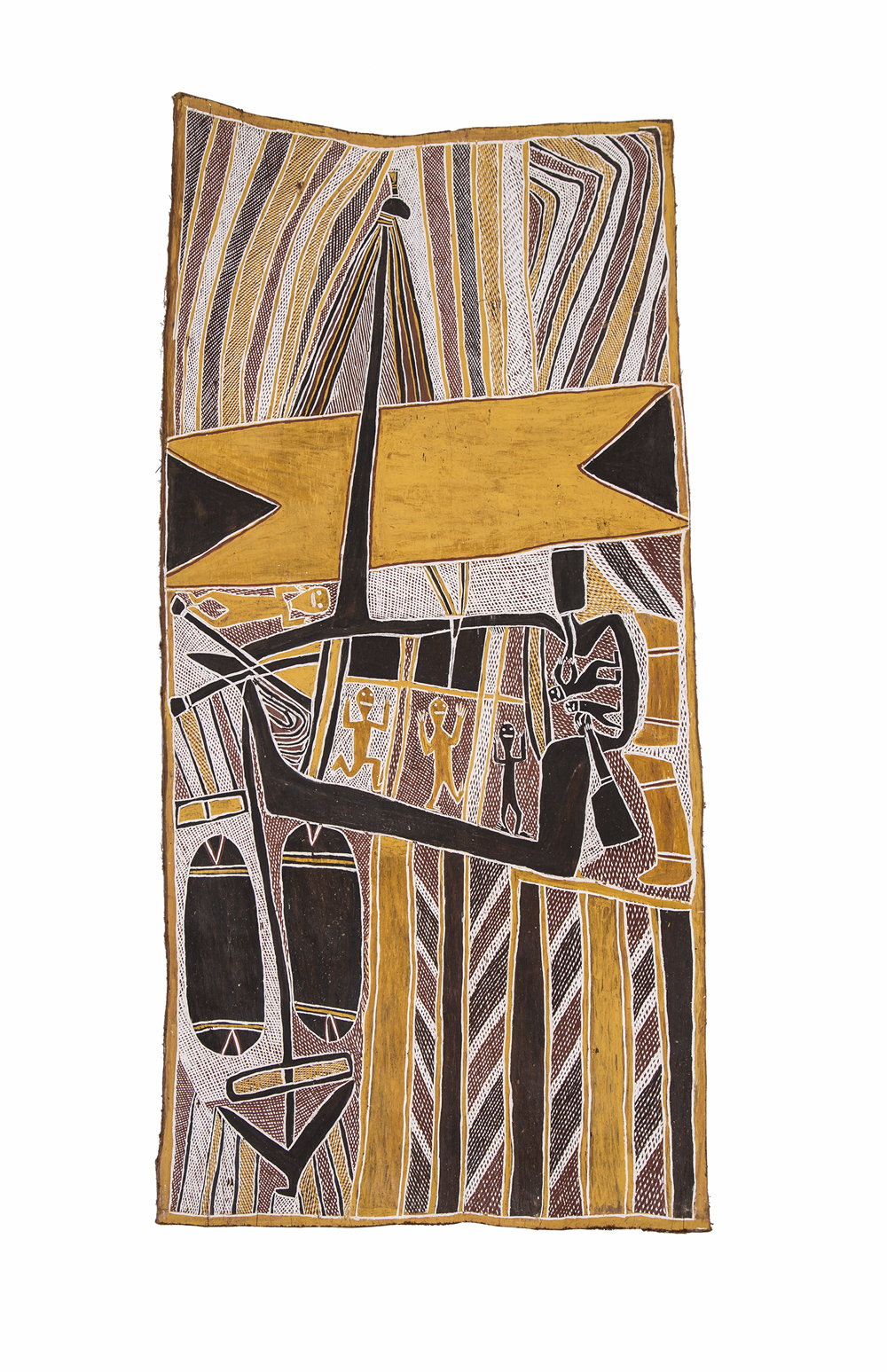Stop 16 - Bark Paintings
Bark paintings like these examples from the Northern Territory offer the viewer insight into the style and operation of vessels from the Indonesian archipelago. While paintings can often be stylistic, the internal details suggest that the painter has some knowledge of the structure of these craft. These vessels are representations of Makassan fishing boats called praus. This term can refer to any sort of small vessel from canoes to multi-masted sailing traders but it also describes substantial wooden craft of traditional or semi-traditional style intended for cargo work. ‘Makassan' is also a generic term in this context although it mainly refers to sailors coming from South Suluwesi.
Praus sailed in fleets, leaving their home ports in December with the arrival of the northwest monsoon. The fleet moved westward along the northern Australian coast from the Gulf of Carpentaria to the Kimberley, fishing shallow banks and reefs for trepang also known as beche de mer or sea cucumber which was prized for its culinary and aphrodisiac properties, particularly by the Chinese. In addition to fishing for trepang, the Makassans traded items for turtle shell, sandalwood, pearls, pearl shell, tin, Manganese and dried shark tales all of which were sold in the market places of the Indian Ocean.
The regular arrival of Makassans also influenced some aspects of the Aboriginal life in Northern Australia. Have look throughout the exhibition for objects of contact inspiration or direct exchange: the dugouts in front of you, for example, share many stylistic similarities although one was made on the mainland, the other in Indonesia. The wurumu statues in the Ocean of Objects section are indigenous totemic sculptural pieces of Makassan men. A beautiful bead necklet from the Northern Territory was not made in Australia but perhaps bartered or gifted by Makassan visitors.

- Next Stop
-

Stop 17 - Tiger Cowrie Shell
next